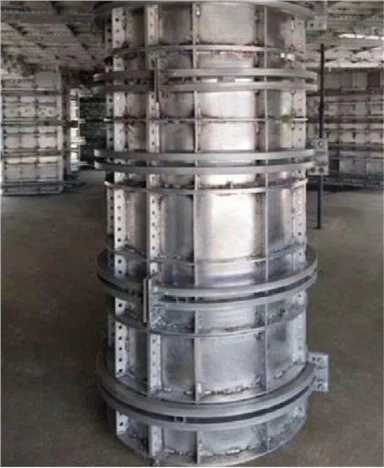How to optimize the nodes of the aluminum alloy template?
Nov 30, 2021
1. When the planning requirements reach the internal and external walls without plastering, it is recommended that all external walls should be made of reinforced concrete shear wall structure. After the bolt holes are waterproofed, the subsequent process construction can be carried out; due to the material requirements of the external wall decoration surface, the external wall Thin plastering can be used; internal insulation should be used as far as possible for heat preservation.
2. Avoid forming a short masonry structure between the structural column and the main structure, reduce the amount of construction of secondary components, and pour it together with the main structure at one time.
3. The modulus of the structural scale should be as much as possible to 50 mm, to avoid uneven components with small net gaps in the structure.
4. Door and window lintels, wall stacks should be fully integrated with the one-time structure as much as possible.
5. After reinforcement of the concrete structure at the junction of the concrete and the infill wall (10 mm deep × 150 mm wide), it shall be treated with tongue-and-groove treatment (hung alkali-resistant glass fiber mesh cloth and modified polymer mortar) to avoid cracking. Under the condition of not plastering, the general masonry structure should be thinly plastered, and the thickness of the masonry should be: the thickness of the concrete wall is -20mm.
6. When the inner and outer walls are not plastered, in order to ensure the waterproofing of the doors and windows on the outer walls, the structural window opening planning needs to be optimized, and the pressure grooves are planned around to facilitate the installation of fixing pieces, and together optimize the structural planning of the fixed parts of the surrounding railings.
7. Because the plastering process has been reduced, the dimensions of all doors and windows have been reduced by about 20mm.
8. Minimize the exterior wall lines as much as possible. Inevitable conditions can also be replaced with lightweight materials.
9. The shear wall at the expansion joint is long, which is not conducive to the installation of the aluminum mold. The expansion joint is reserved for construction windows, which is convenient for reinforcement when the construction is divided into slabs.
10. The walls of elevator shafts and stairwells are planned as full shear wall structures as much as possible. (Provide stop-floor instruction line box information in advance)
11. The interior decoration plan and tap water plan should be confirmed as soon as possible to avoid random changes, and the later slotting will not affect the plastering effect. The cold and warm pipes should be placed in the ceiling as much as possible; the toilet drainage should use the same layer of drainage to reduce the caisson back sill.
12. Box-type templates are used for pipe wells and flue windows, and inclined openings are set in the corners of the joints to facilitate mold removal.
13. The hanging mold method is used for the drop-off parts of the balcony, bathroom, etc., and the angle aluminum plate is set for tie reinforcement and positioning.
14. The stairway adopts the finalized closing template, the step view hole, and the movable board is closed, which is used to exhaust air and view the concrete.
15. Set reserved window holes for easy transportation: the window holes are selected on the inclined surface to facilitate subsequent sealing, which is used for material transportation and reduces the use of tower cranes. At the same time, the unloading channel is not used on site to reduce hidden dangers.
16. When some components cannot meet the template modulus requirements due to planning function, cost and other reasons, other methods can be used for cooperation under the premise of ensuring the quality of the template. For example: wood molds, plastic molds, multilayer decorative threads, etc.







